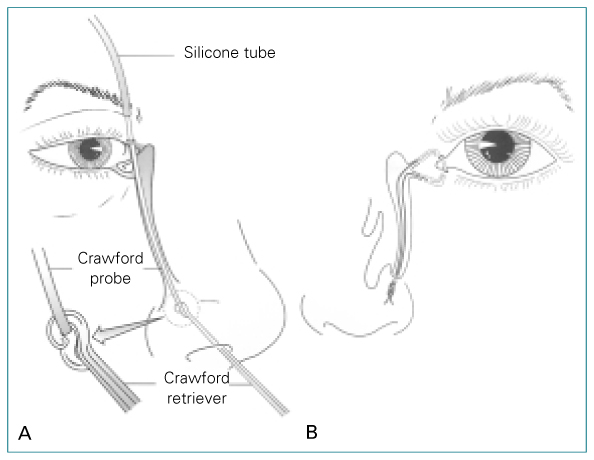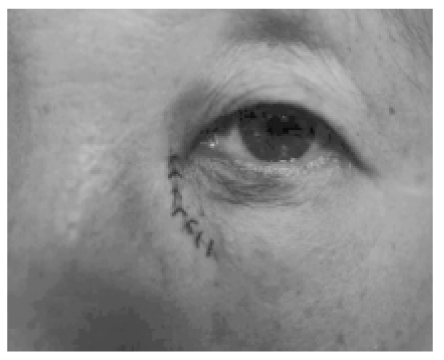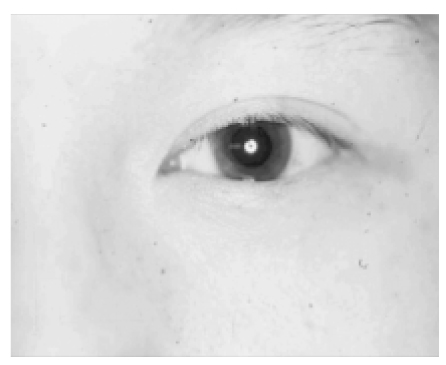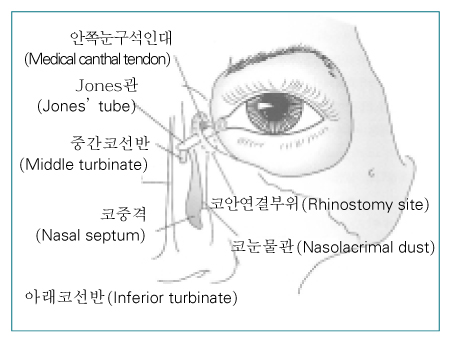 |
 |
- Search
| J Korean Med Assoc > Volume 48(7); 2005 > Article |
Abstract
A high percentage of patients with disorders of the lacrimal drainage system present to the ophthalmologists with the complaint of epiphora. These patients complain of the blurred vision due to tear, and "mattering" and pain of the eyes due to secondary conjunctivitis and acute or chronic dacryocystitis. The aim of surgery on the lacrimal drainage system to relieve epiphora or acute and chronic inflammations of the eye and the lacrimal system. Although the causes of congenital and acquired obstructions are different, the accurate knowledge on the anatomy, the causes of obstruction, and the diagnostic methods is essential in the evaluation of patients with epiphora and for the optimal management of obstruction of the lacrimal drainage system. In this article the author will discuss the surgical managements of disorders of the lacrimal drainage system associated with age, focusing on the degree and position of obstruction from a review of the published data.
References
1. Ffooks OO. Dacryocystitis in infancy. Br J Ophthalmol 1962;46:422-434.
3. Price H. Dacryocystitis. J Pediatr 1947;30:300-305.
4. El-Mansoury J, Calhoun JH, Nelson LB, Harley RD. Results of late probing for congenital nasolacrimal obstruction. Ophthal-olog 1986;93:1052-1054.
6. Welsh MG, Katowitz JA. Timing of silastic tubing removal after intubation for congenital nasolacrimal duct obstruction. Ophthal Plast Reconstr Surg 1989;5:43-48.
7. Leone CR Jr, Van Gemert JV. The success rate of silicone intubation in congenital lacrimal obstruction. Ophthalmic Surg 1990;21:90-92.
8. Angrist RC, Dortzbach RK. Silicone intubation for partial and total nasolacrimal duct obstruction in adults. Ophthal Plast Reconstr Surg 1985;1:51-54.
11. Toti A. Nuovo metodo conservatore di cura radicale delle suppurazioni croniche del sacco lacrimale (Dacriocistorinostomia). Clin Mod Firenze 1904;10:385.
12. Tarbet KJ, Custer PL. External dacryocystorhinostomy. Surgical success, patient satisfaction, and economic cost. Ophthalmolgy 1995;102:1065-1070.
14. Caldwell GW. Two new operations of nasal duct with preservation of the canaliculi. Am J Ophthalmol 1893;10:189-196.
15. McDonogh M, Meiring JH. Endoscopic transnasal dacryorhinostomy. J Laryngol Otol 1989;103:585-587.
16. Hartikainen J, Grenman R, Puukka P, Seppa H. Prospective randomized comparison of external dacryocystorhinostomy and endonasal laser dacryocystorhinostomy. Ophthalmology 1998;105:1106-1113.
20. Jones LT. Conjunctivodacryocystorhinostomy. Am J Ophthamol 1965;59:773-783.
23. Steinspair KD, Glatt HJ, Putterman AM. A 16-year study of conjunctival dacryocystorhinostomy. Am J Ophthalmol 1990;109:387-393.
- TOOLS
-
METRICS

-
- 2 Crossref
- Scopus
- 1,076 View
- 7 Download
-
Related articles in
J Korean Med Assoc -
Surgical treatment of esophageal cancer2024 February;67(2)
Diagnosis and management of gestational diabetes mellitus2023 July;66(7)
Diagnosis and treatment of trigeminal neuralgia2023 January;66(1)
Pharmacological management of muscle spasticity2022 February;65(2)
Surgical treatment of senile spinal diseases2021 March;64(3)












